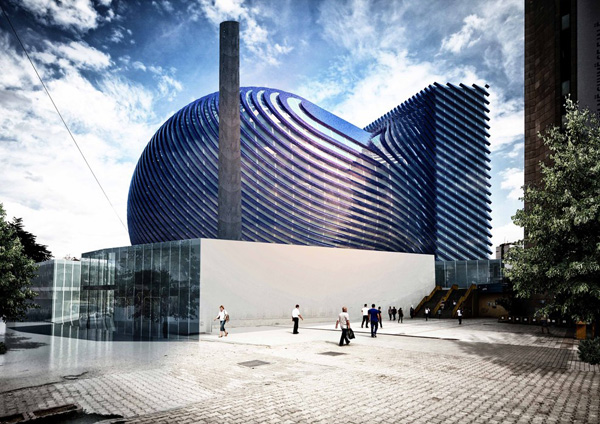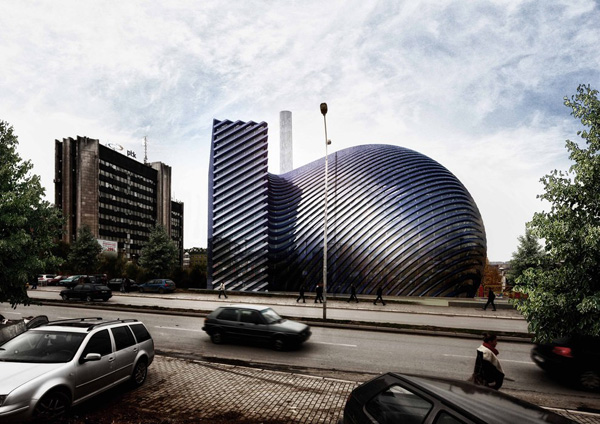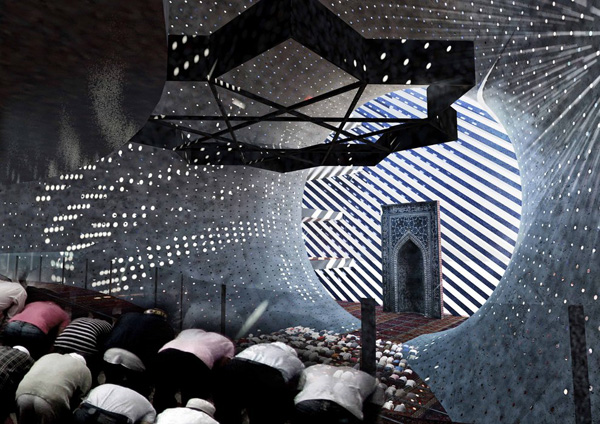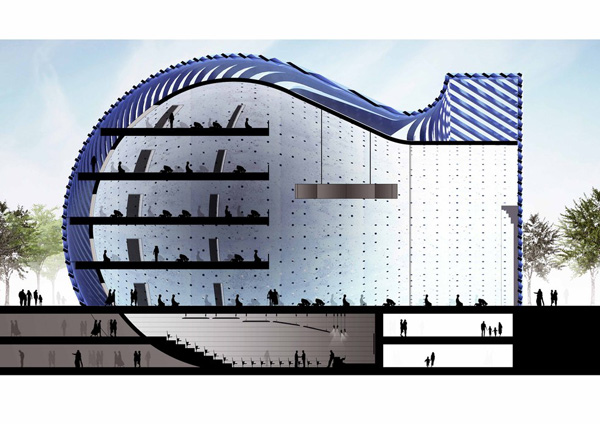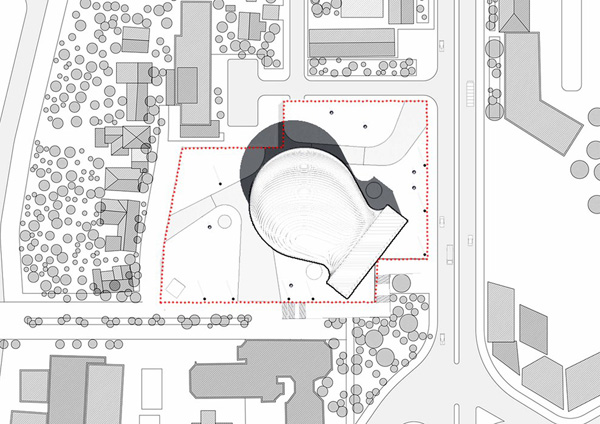Paolo Venturella, Angelo Balducci, Luca Ponsi, and Paolo Gaeta envisioned a religious space with particular attention to sustainability. The project specifically focuses on photovoltaic systems and orientation creating an iconic building for the Muslim community.
The monolithic building proposal by these Italians becomes a urban fulcrum for the city of Prishtina, Kosovo. By merging the two main elements of the mosque and creating the “Kiblah wall dome,” the plan begins to indicate a direction for users to pray, creating a communal space for people to unite.
From a geometric point of view, the mosque which faces Mecca can be seen as a sphere that extrudes out from the wall. The prayer hall is divided into two separated rooms, accommodating a smaller area for praying from Monday to Thursday, and a larger space for friday and festivals. Both sections are designed on multiple levels, bringing men and women together at different levels. Educational, social, administrative and commercial areas are separated from the sacred space above.
The shape of the envelope is conceived as a “double-skin” generating a circular intervention around the prayer hall. Made with a series of louvers, the facade is covered with thin photovoltaic film that harvests energy for the mosque and the other services. Taking advantage of the spherical shape, the curved form guarantees a surface perfectly oriented to the sun at any time of day so to optimize the radiation of the sun. The tilted shaders avoid the direct passage of sunlight creating indirect illumination while allowing a view of the outside. The southern facing “Kibla wall” works as a greenhouse element that captures heat and releases it to the interior when needed during colder periods.

